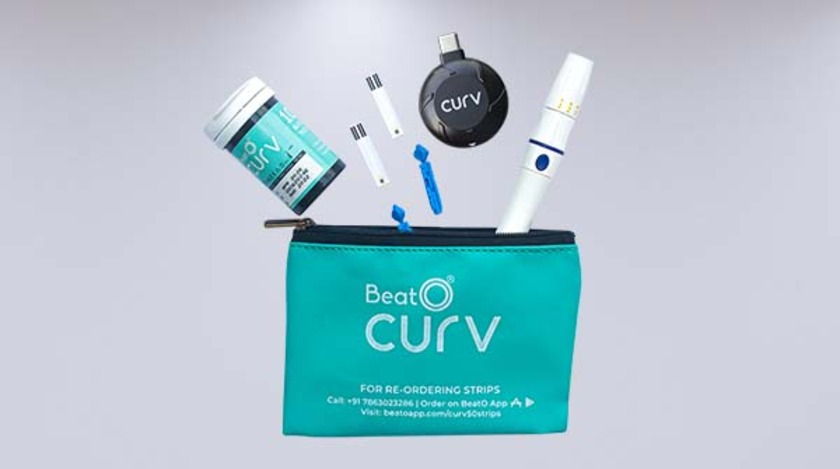Managing diabetes effectively relies on accurate and consistent blood glucose monitoring. Glucometers, also known as blood glucose meters, have become indispensable tools for individuals with diabetes. These compact devices allow you to measure your blood sugar levels at home or anywhere, providing essential data for making informed decisions about your diabetes management. However, to get the most reliable results from your glucometer, it’s crucial to follow best practices for testing. In this guide, we’ll share the top seven tips for accurate blood glucose testing in 2023.

1. Wash Your Hands Thoroughly
Before you begin testing your blood glucose, ensure your hands are clean. Even small traces of food, sugar, or dirt on your fingers can affect the accuracy of your reading. To clean your hands effectively:
- Use warm water and mild soap.
- Rinse thoroughly and dry your hands with a clean towel.
- Avoid using hand sanitizers that contain sugar or fragrance, as they can interfere with your readings.
Washing your hands before testing is a simple yet effective way to ensure the accuracy of your results.
2. Check Your Glucometer
Periodically, you should verify the accuracy of your glucometer. Calibration standards for glucometers can change, so it’s important to ensure your device is still functioning correctly. Here’s how:
- Use a control solution provided by the manufacturer.
- Follow the instructions on the control solution package.
- Test your glucometer with the control solution and compare the results to the expected range.
If your glucometer consistently provides inaccurate readings, contact the manufacturer for assistance or consider getting a new device.
3. Use Quality Test Strips
The accuracy of your blood glucose measurements depends on the quality of the test strips you use. Always use test strips before their expiration date. Additionally:
- Store your test strips properly, following the manufacturer’s instructions.
- Be cautious when using expired or damaged test strips, which can yield incorrect readings.
Using high-quality, unexpired test strips is essential for precise blood glucose testing.
4. Prick Your Finger Properly
To obtain a drop of blood for testing, you’ll need to prick your finger with a lancing device. Here are some tips for this step:
- Rotate the puncture site on your finger to minimize discomfort and prevent calluses.
- Ensure the lancet device is set to the appropriate depth for your skin type.
- Follow the instructions provided by your glucometer’s manufacturer for the correct lancing technique.
Remember that lancing should be as painless as possible, and a gentle squeeze of your finger will yield enough blood for a test.
5. Allow Proper Blood Flow
When collecting the blood sample for testing, it’s important to allow proper blood flow to ensure an accurate reading. Follow these steps:
- Gently massage the area around the puncture site to encourage blood flow.
- Do not “milk” your finger, as it may introduce tissue fluid into the blood sample.
- Allow the blood drop to form naturally without squeezing your finger excessively.
Collecting a quality blood sample is crucial for reliable results.
6. Pay Attention to the Timing
Timing is crucial when it comes to blood glucose testing. Make sure you follow these guidelines:
- Perform your blood glucose test at the recommended time, whether fasting, before meals, after meals, or as directed by your healthcare provider.
- Record the date and time of your tests in a logbook or use a digital app to track your readings over time.
- Try to be consistent with your testing times to spot patterns and make necessary adjustments to your diabetes control plan.
7. Keep Your Glucometer Clean
Regular cleaning and maintenance of your glucometer are vital for accurate readings. Here’s how to maintain your device:
- Follow the manufacturer’s instructions for cleaning the glucometer and any accompanying accessories.
- Use a soft, lint-free cloth to wipe the device.
- Avoid harsh chemicals or abrasive materials that damage the screen or sensors.
A clean glucometer ensures that no residue interferes with your readings.
In conclusion, accurate blood glucose testing with a glucometer is essential for managing diabetes effectively. By following these tips, you can ensure the reliability of your readings, helping you make informed decisions about your diabetes care. Always consult your healthcare provider for personalized guidance on blood glucose testing and diabetes management.
Remember, diabetes management is a dynamic process, and regular communication with your healthcare team is crucial to making the best decisions for your health.
Read More: Glucometer Strips: Empowering Diabetes Management with Precise Blood Sugar Monitoring
If you adhere to these guidelines, you can achieve more consistent and accurate blood glucose readings, which are vital for effective diabetes management. Make sure to stay updated with the latest recommendations and technological advancements in glucometer devices to enhance your diabetes care in 2023 and beyond.
Disclaimer:The content of this article is compiled information from generic and public sources. It is in no way a substitute, suggestion, or advice for a qualified medical opinion. Always consult a specialist or your own doctor for more information. BeatoApp does not claim responsibility for this information .
Dr. Navneet Agarwal is an established and highly skilled Diabetology with over 25 years of experience in Diabetology & Obesity. He is well-regarded for his quality and patient-centered diabetes care. Also, keep track of your blood sugar levels with a Doctors’ approved smart glucometer and elevate your healthcare routine.




